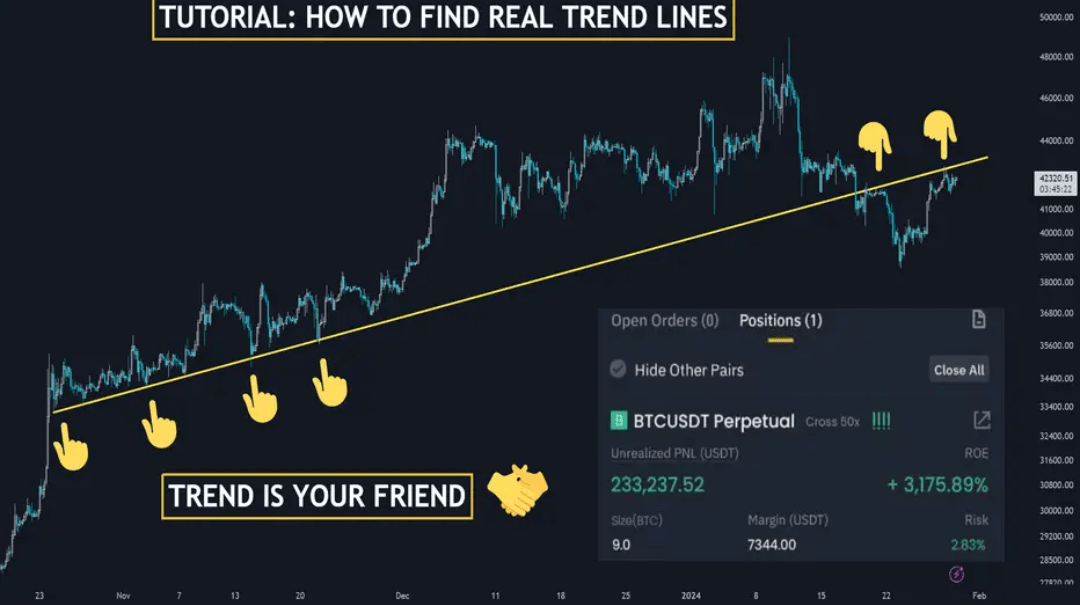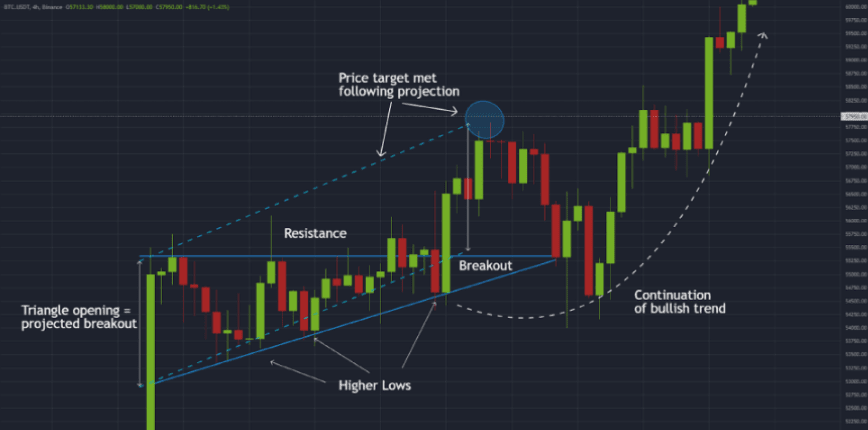1. Identify the trend
Use trend lines: connect at least two rising lows for an uptrend or two descending highs for a downtrend.
#Confirm with moving averages: for example, when the EMA 50 crosses above the EMA 200 in a 1-hour chart and the ADX is above 30, it indicates a strong upward trend.
2. **Wait for a pullback**
In an uptrend: when the price retraces to the trend line or moving average, it is the ideal time to enter long.
In a downtrend: look for bounces towards the line/EMA to enter short positions.
3. Risk management
Place the stop‑loss just below the last low (in an uptrend) or above the last high (in a downtrend).
Use trailing stops to secure profits as the trend advances.
4. **Define your take-profit (TP)**
Set the TP at previous resistance levels or let the position run using a trailing stop.
5. Use additional confirmations
RSI: avoid buying in overbought zone (+70) or selling in oversold zone (−30).
MACD and volume can help you catch the strength of the movement.
🧩 Practical example with Binance
1. Open the BTC/USDT chart in the Binance interface (using TradingView).
2. Add two EMAs: 50 and 200 periods.
3. Observe a golden cross: EMA 50 over EM
 To 200 + ADX >30 → bullish signal.
To 200 + ADX >30 → bullish signal.
4. Wait for the price to retrace towards these EMAs or the trend line, buy at that point.
5. Place the stop-loss below the last low.
6. Define the exit with a TP in the next resistance or use trailing.
7. Confirm the movement with RSI (not overbought) and increasing volume.
🎯 Template for your task
Section Key content
Identification Trend + confirmations
Entry Pullback to lines/EMA
Stop‑loss Previous swing low/high
Target Next resistance or trailing
Extra indicators RSI, MACD, volume
✅ Conclusion
Trend Trading is effective because it follows the market instead of anticipating it. It requires discipline: wait for clear signals, manage risk and confirm with indicators. In Binance, you have all the integrated tools to implement it step by step with your own charts.
